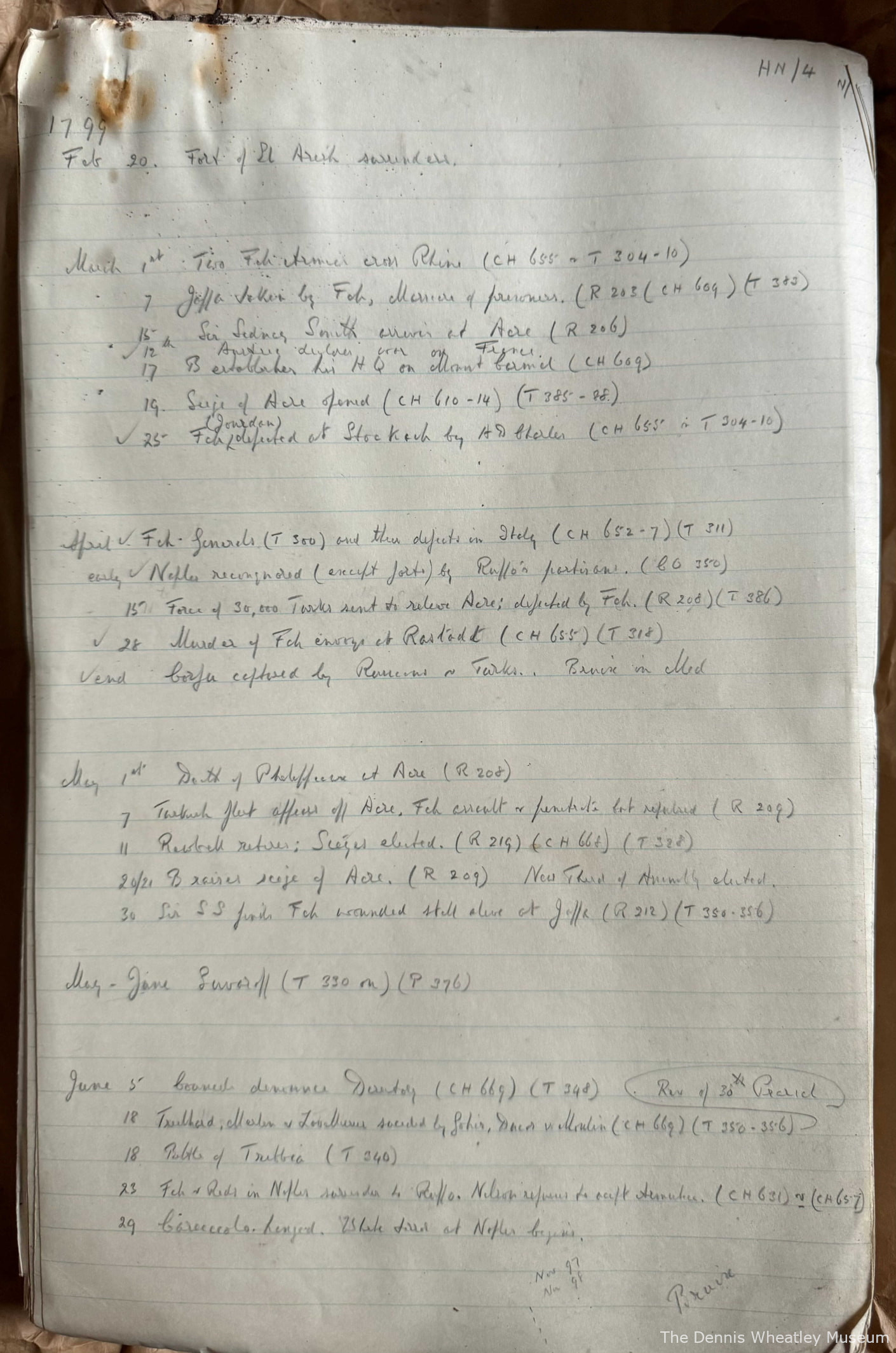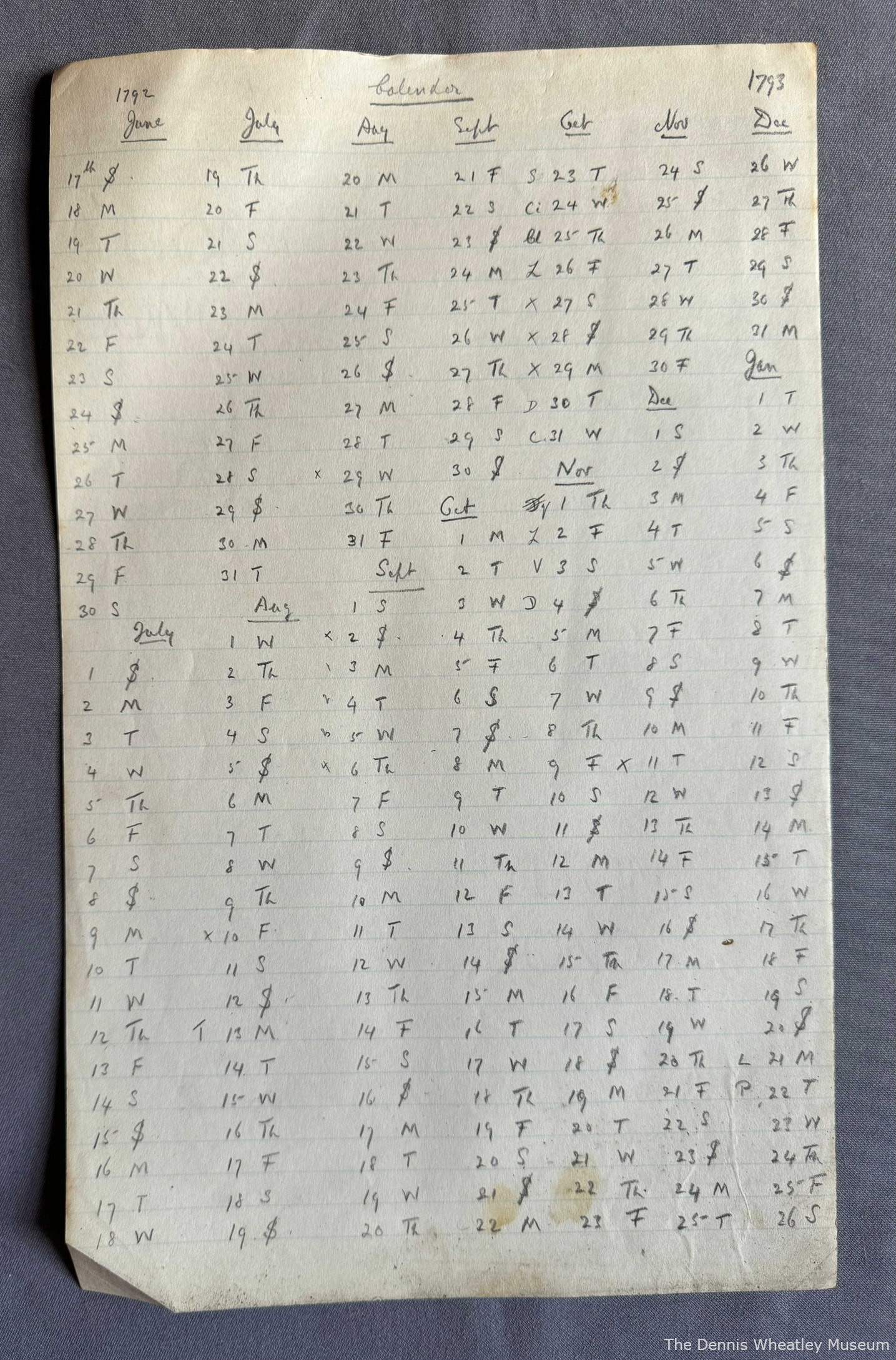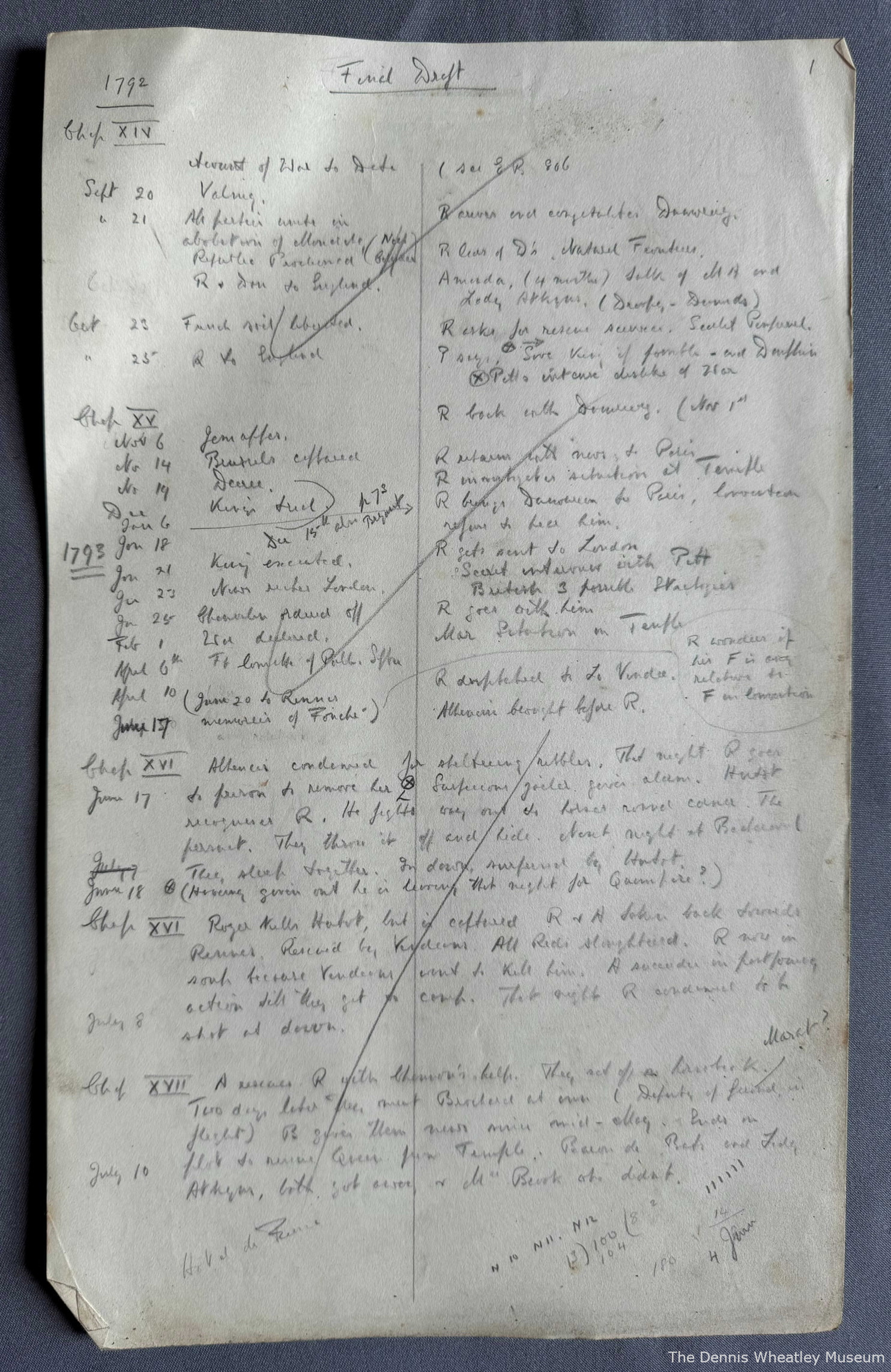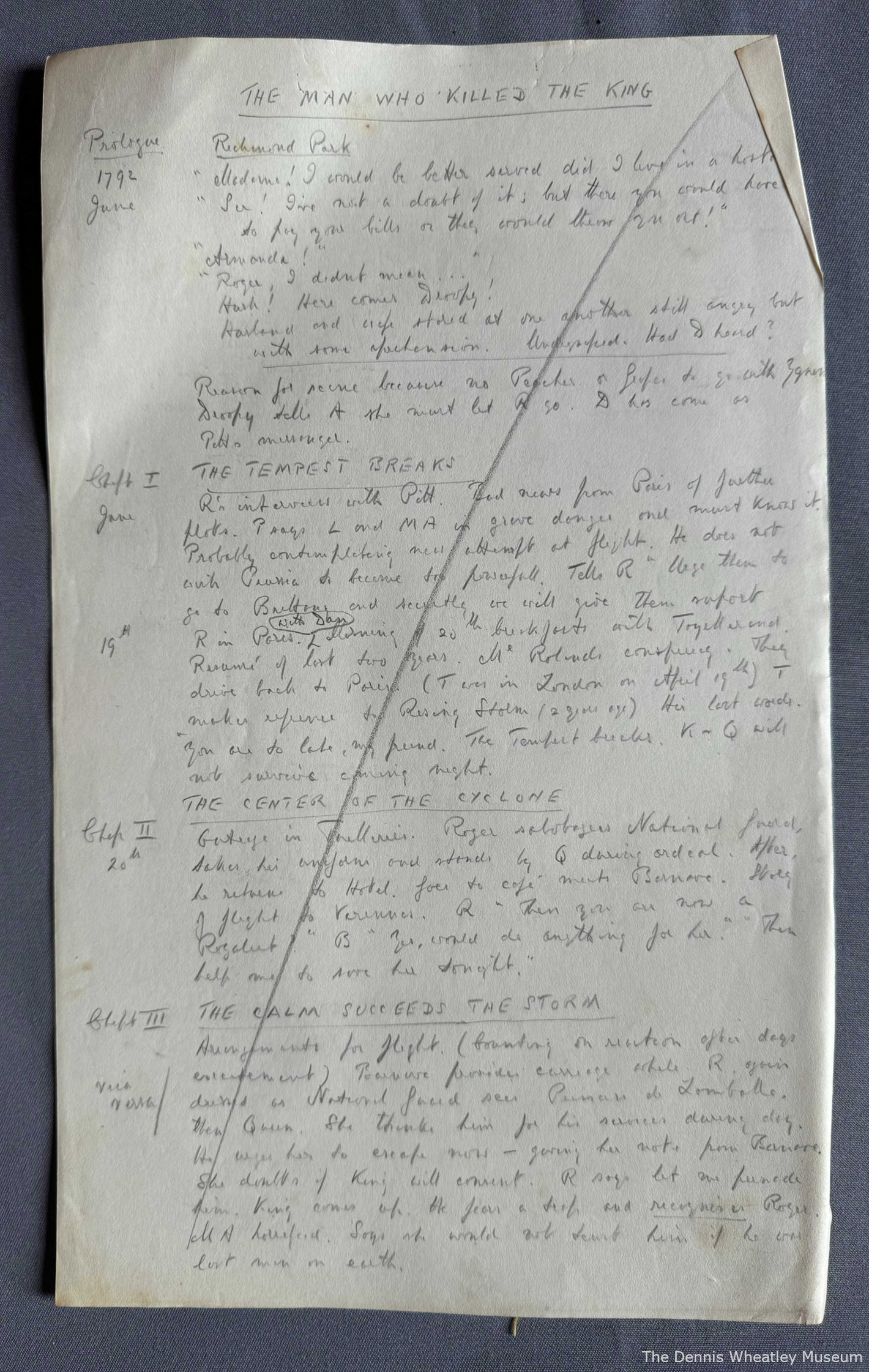
 |
Floor Plan |  |
The Dennis Wheatley 'Museum' - Dennis Wheatley's Writing Technique
Novels with historical backgrounds - extended planning


Typed and manuscript historical timelines for 'The Man Who Killed The King' (left) and for 'The Sultan's Daughter' (right)
Click on the images to enlarge

Working out the days of the week for the Napoleonic era for 'The Man Who Killed The King'
Click on the image to enlarge

The parallel factual and fictional synopses for 'The Man Who Killed The King'
Click on the image to enlarge

...and while he was writing the pencil manuscript, DW would make a list of small historical points which he found he needed to resolve... (in this case for 'The Wanton Princess')
Click on the image to enlarge
When DW wrote a historical novel or a novel with a historical background, his pre-planning was even more thorough.
First, when he had done his research, he would carefully write down a factual timeline for all the events that were to go into the novel. Sometimes this timetable would be so detailed as to cover more than six closely handwritten pages. DW would also make various supplementary lists if he thought they would be useful - an example being illustrated above where DW worked out the days of the week for the dates in the period which he was covering (working out the days of the week is something that could now be done in a few seconds on Google, but in DW's day it must have been incredibly laborious).
Having written down his factual timeline, DW would handwrite parallel synopses for the factual timeline and for what his hero would be doing at each key moment. Often DW would divide his page by drawing a vertical line in the middle and put the factual events on the left side of the line and what his fictional hero (Roger Brook or 'RB' in the above illustrations) would be doing on the right.
Having done this, DW would then write a synopsis for the novel when merged the factual and fictional events into one - at which stage he produced something totally integrated that looked like one of his more straightforward synopses. Sometimes, in order to get the flow of the book to his liking, as with his non-historical novels, DW would produce several iterations of his integrated synopsis until he was completely happy with it.
Then, having produced this integrated storyline, DW would start writing; and once he started writing, fact and fiction having been integrated in the initial planning, he would write one, completely integrated novel.
Note: While this account is based on the evidence of what is in DW's manuscript packets, it does not easily reconcile with the accounts DW occasionally gave his public as to how he wrote his historical novels. To see the account DW gave his public, please click here.
| Provenance: | Private Collections |


